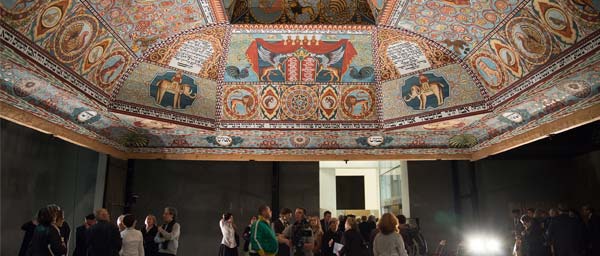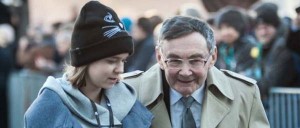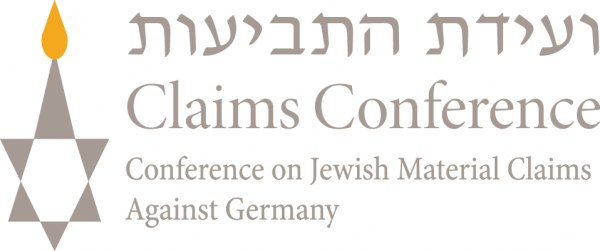Preserving Polish Jewish History

When Marian Turski was 14, he was forced, with his parents and younger brother, into the Lodz Ghetto and then deported to Auschwitz-Birkenau in August 1944. He survived a death march to Buchenwald in January 1945, and was then sent on a second death march to Theresienstadt where, sick with typhus, he was liberated by the Soviet Army. Marian endured the Lodz Ghetto and Auschwitz with his boyhood friends Roman Kent and Noach Flug z”l.
In October 2014, Marian, a member of the Claims Conference negotiating delegation, symbolically opened Polin, Museum of the History of Polish Jews, with 13-year-old Joanna Widła, a graduate of the Lauder-Morasha School in Warsaw. While Marian’s youth was stolen from him and the world he lived in destroyed, Joanna represents the future of Polish Jewry. Together, they opened a museum that explores the deep and rich history of Jews in Poland before the Shoah. Marian, born Moshe Turbowicz, is the museum’s Chairman of the Council and has worked tirelessly to bring it to fruition.

The Claims Conference has contributed funding toward the Shoah component of this beautifully and thoughtfully constructed landmark. Visitors to Poland now and in the future will learn of the thousand-year history of a Jewish population that had grown to 3.3 million by 1939 before it was destroyed in less than six years.
Israeli President Reuven Rivlin, in his first overseas visit in office, and Polish President Bronislaw Komorowski participated in the opening ceremonies. President Rivlin spoke of how Jews flourished in Poland for 1,000 years. “To our great sorrow, it is also the largest graveyard of the Jewish people,” he said. “This was the birthplace of the shtetl, and this is where it died.”
President Komorowski paid tribute to the Jewish role throughout the centuries in his country. “We cannot understand the history of Poland without the great contribution of its Jews to Polish culture,” he said. He also said that Polish Jews had been pioneers in the creation of the State of Israel, and that he was delighted that its president had joined him in opening the museum.
During the ceremony, President Rivlin laid a wreath on the street at the entrance to the museum in memory of those who fought in the Warsaw Ghetto Uprising. The Warsaw Ghetto Fighters’ Monument is across from the museum entrance. Other dignitaries attending included Prime Minister of Poland Ewa Kopacz, Polish legislative leaders and the Mayor of Warsaw, Hanna Gronkiewicz.
The museum largely emphasizes Polish Jewish history, culture and contributions to the country. While it addresses the Shoah, the museum’s founders made a conscious decision that the destruction of such a vibrant community should not overshadow the presentation of its rich history. The museum’s eight galleries show in chronological order the 1,000 years of Jewish life in Poland.
The building was designed by Finnish architect Rainer Mahlamaki, which includes a full replica of the wooden ceiling and roof of a 17th-century synagogue from the town of Gwozdziec, richly decorated with murals. None of Poland’s many wooden synagogues survived the war so this painstaking recreation is all the more poignant.
It was poignant to see Marian and Joanna, two Polish Jews separated by a lifetime yet bound together by a common heritage, together opening the exhibition. Marian was among the last Polish Jews to be born before the community was decimated, yet here he was with a young person who represents a small but growing Jewish presence in Poland.

